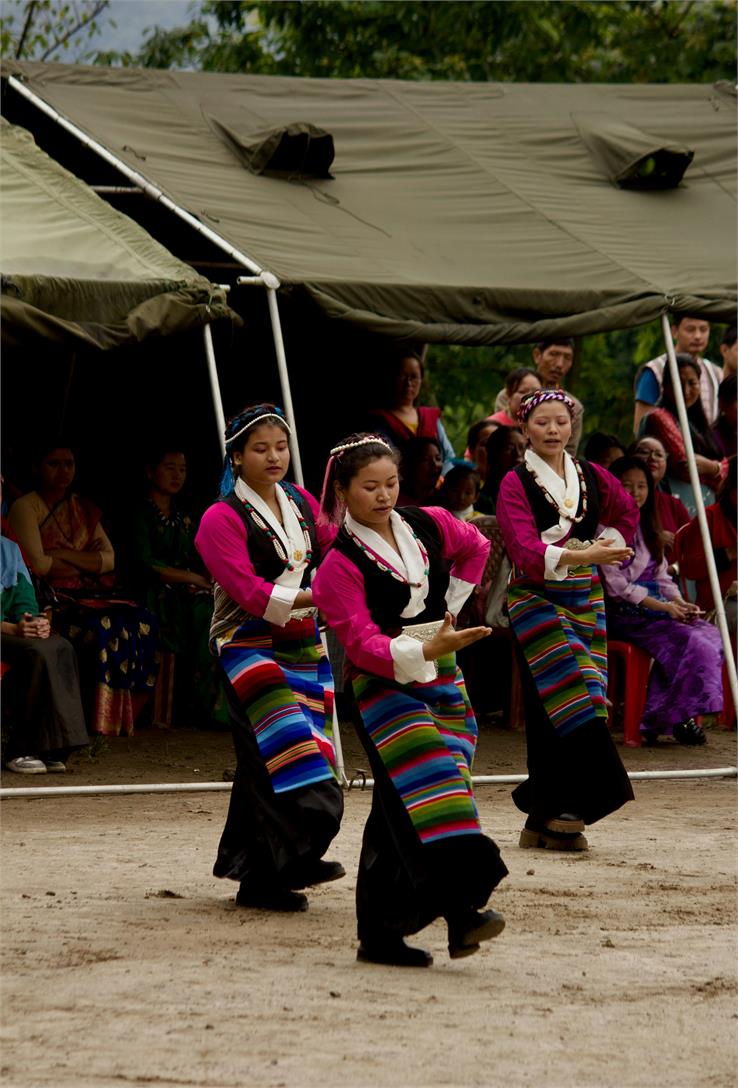Festivals of Sikkim: A Dive into the Rich Cultural Heritage
India boasts of a kaleidoscope of cultural and traditional fragments. The beautiful tapestry of diversity woven across various regions brings forth the strength of India. As we move along this blog post, allow us to take you through the vibrancy of Sikkim and its festivals. A beautiful culmination of traditional and emotional extravaganzas, Sikkim's festivals introduce you to the heritage and legacy of culture. Alight India is pleased to take you on a virtual tour of the spiritual fervour of Bumchu Festival, the exuberance of Losar, and the mesmerising dances of Pang Lhabsol. Each festival is a hearty testament to Sikkim's vibrant tapestry of cultures, drawing travellers from far and wide to partake in the festivities.
Bumchu Festival
The Bumchu Festival is celebrated annually at the revered Tashiding Monastery. Many devotees and culture enthusiasts travel to Sikkim to partake in the festivities. The Bumchu Vase, which is also the centrepiece of this celebration is believed to contain holy water imbued with blessings. The most anticipated moment of the Bumchu Festival is when the head llama ceremonially opens the vase to reveal the water level inside. It is believed that the water level in the vase is detrimental to the kinds of fortunes that are in store for the year ahead A full vase signifies a year of prosperity and good fortune, while a low water level suggests challenges ahead. This moment of revelation is one of deep reverence and anticipation, as locals and pilgrims gather to receive blessings and seek guidance for the future.
The festival is more than a religious observance; it’s a vibrant cultural event. The celebrations feature pompous colourful processions, traditional music, and dance performances, and elaborate rituals that highlight Sikkim’s rich heritage. Through the Bumchu Festival, the people of Sikkim pay homage to their spiritual beliefs, fostering a sense of community and shared cultural identity that transcends generations.
Losar Festival
The Tibetan New Year is known as Losar and is one of the most significantly marked festivals in Sikkim. It is the beginning of the lunar calendar and usually falls in February or March. Enthusiastically laden with a joy of love, affection and bond, Losar is a time for family reunions, feasting on local delicacies, and rejoicing in cultural festivities that reflect the rich heritage of the Tibetan Buddhist community in Sikkim.
As you might have it in the case of any festival across the diversity of India, the preparations for Losar begin weeks in advance. Homes are thoroughly cleaned and decorated to mark the beginning of the new year and welcome new positive energies. Special local delicacies are prepared on this day, including a traditional noodle soup called Guthuk along with a variety of sweets. Various kinds of traditional and cultural rituals are performed to bring in fortune for the community and to ward off evil spirits. If you were to stroll around different regions of Sikkim during the Losar festival, you would find all of them adorned with lights and flags. The monks are known to perform traditional cham dances. They wear traditional and elaborate masks. Not only is Losar highly significant from a religious point of view but also it is a vibrant vision of cultural strength of the region. Celebrating the region’s festivals is a beautiful way to connect with one’s roots and bring in a spirit of communal harmony.
Pang Lhabsol
Pang Lhabsol is a festival that is dedicated to the guardian deities of the land and the sacred Mount Kanchenjunga. This festival is celebrated during the months of August or September. During the festivities, the mountain gods are honoured and the people of the region seek blessings and protection. Pang Lhabsol is deeply rooted in the history and spirituality of Sikkim and showcases the region's rich cultural heritage. The third Chogyal of Sikkim, Chakdor Namgyal, introduced Pang Lhabsol and it has since then become an integral part of Sikkimese culture. During the festival you would be left amazed with the spectacular warrior dance performed by monks in elaborate costumes and masks. It is a dance symbolic of unity of the people of Sikkim and their deep reverence for their guardian deities.
It is a beautiful culmination of time of people coming together and realising the sense of community. The festival also includes traditional music and dance performances, creating a vibrant and festive atmosphere. Offerings are made to the deities, and special prayers are conducted to ensure the well-being and prosperity of the land and its people.Pang Lhabsol is a celebration of Sikkim’s cultural diversity and unity. It reinforces the bond between the people and their sacred land, fostering a sense of communal harmony and reverence for nature and the divine.
If different cultures and traditional practices are something that you find intriguing, then stay tuned. Alight India has lots in store coming up for you regarding all things India, and it’s culture and heritage. Meanwhile, you can check out our website as an insight to the encyclopaedia of India.




